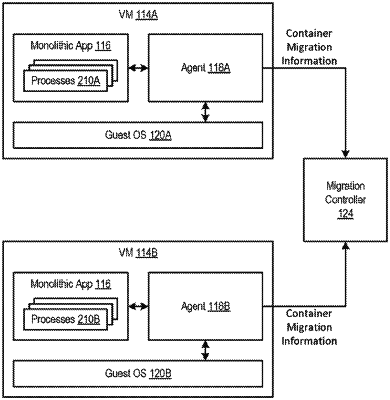| CPC H04L 67/148 (2013.01) [G06F 9/45558 (2013.01); H04L 63/0263 (2013.01); H04L 67/06 (2013.01); G06F 2009/45595 (2013.01)] | 15 Claims |

|
1. A method of migrating a monolithic application to a container platform to execute as a plurality of microservices, said method comprising:
installing a first agent that collects information about the monolithic application;
upon receiving the information collected by the first agent, determining from the received information collected by the first agent: (1) that there exists an inter-process communication between a first process of the monolithic application and a second process of the monolithic application, and (2) that the first process listens on a port;
based on the existence of the inter-process communication, determining to execute the first and second processes together as a first microservice;
generating a first container file including instructions for building a first container (1) that executes the first and second processes together as the first microservice and (2) that is configured to listen on the port;
generating a deployment file for deploying the first container, wherein the first container is then deployed on the container platform based on the generated deployment file;
based on the first process listening on the port, instructing the first agent to forward to the first container, traffic that is directed to the first process;
after instructing the first agent to forward the traffic to the first container, determining an error in the execution of the first container; and
in response to determining the error, instructing the first agent to stop forwarding the traffic to the first container.
|